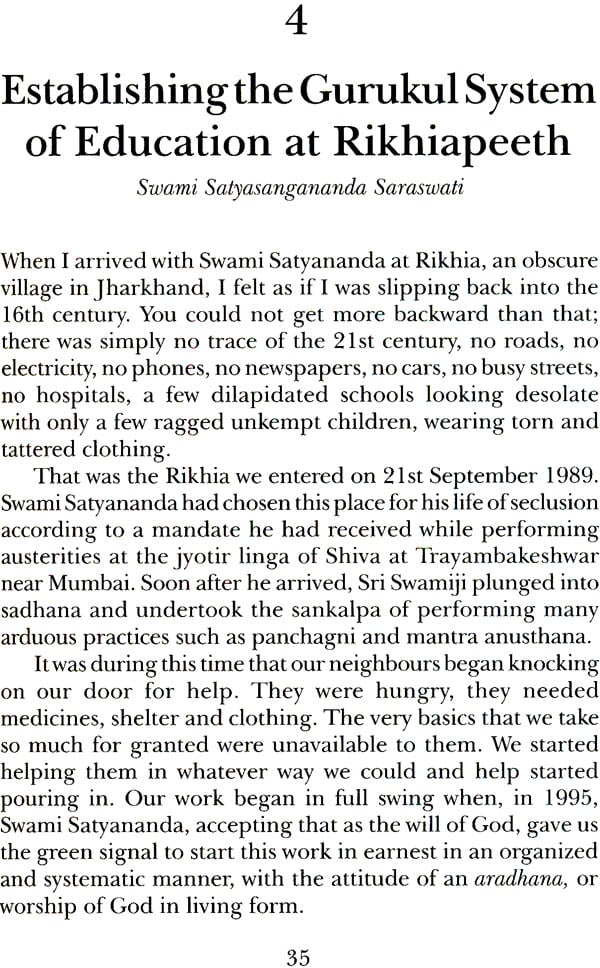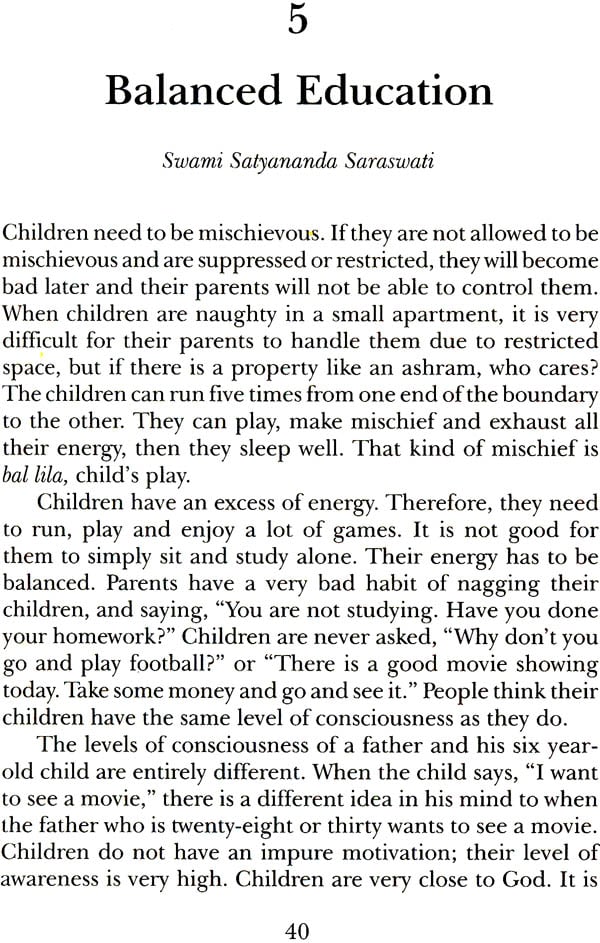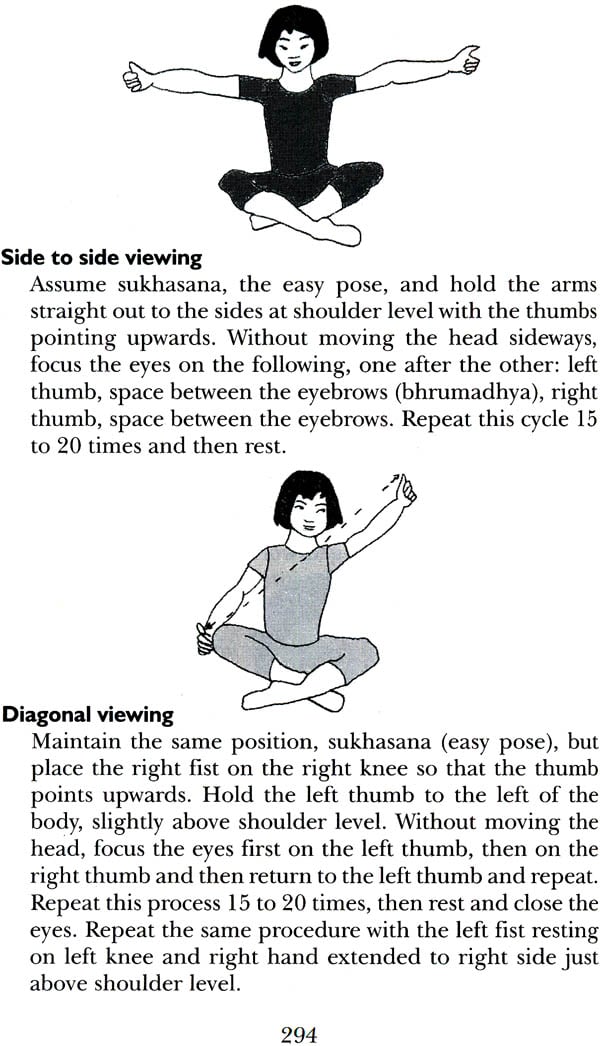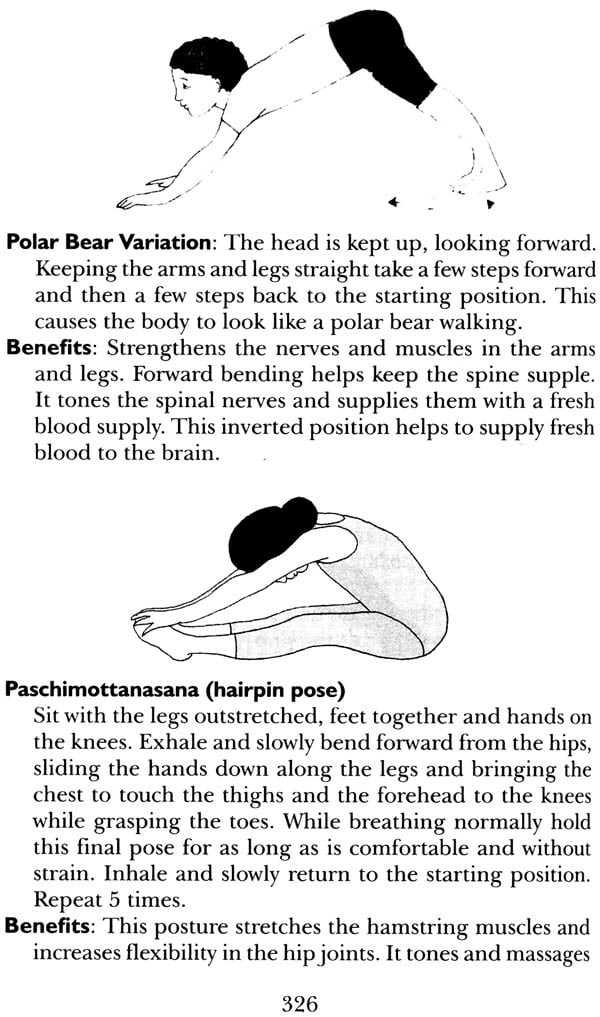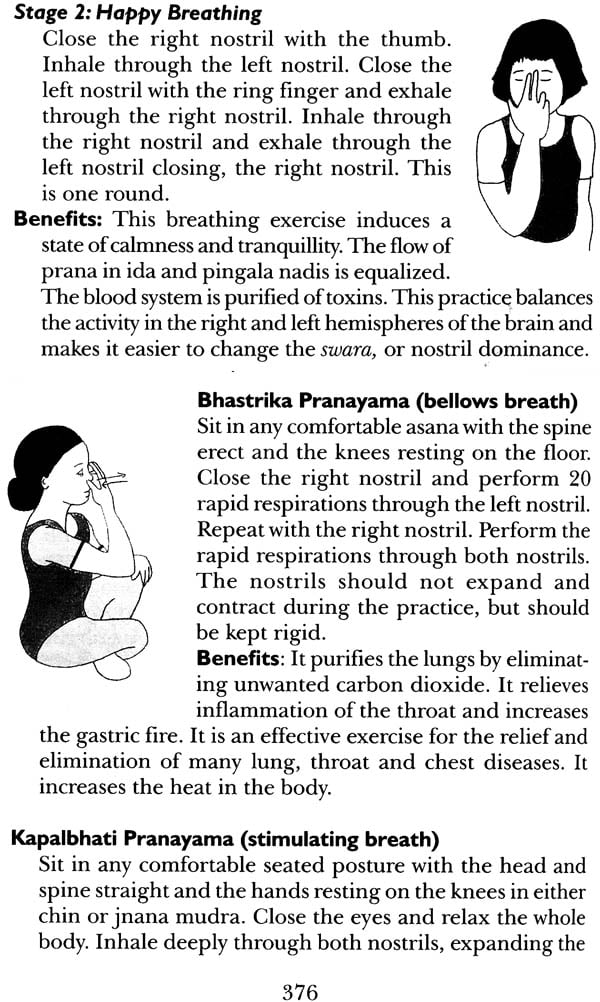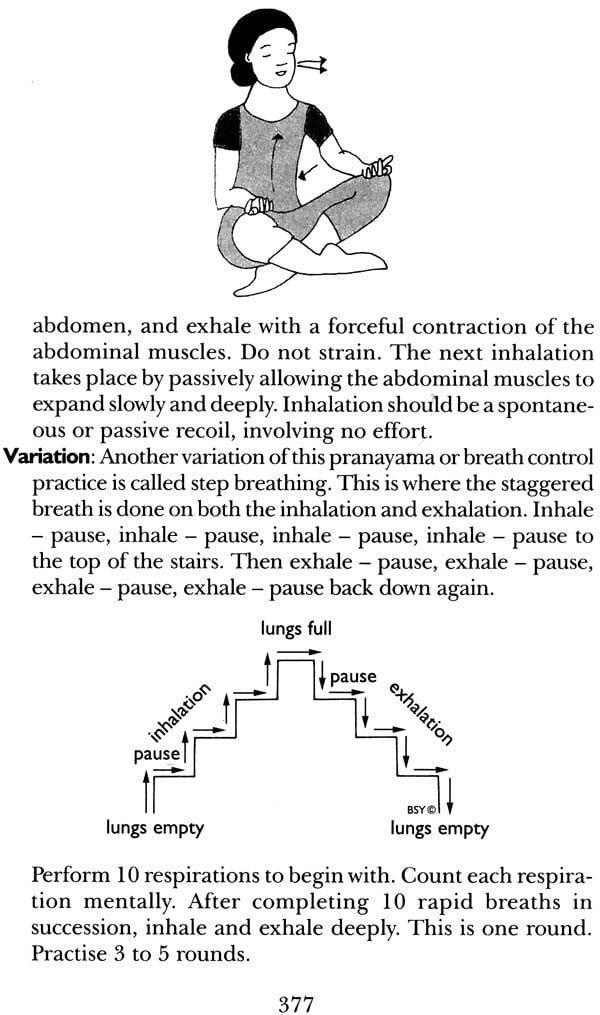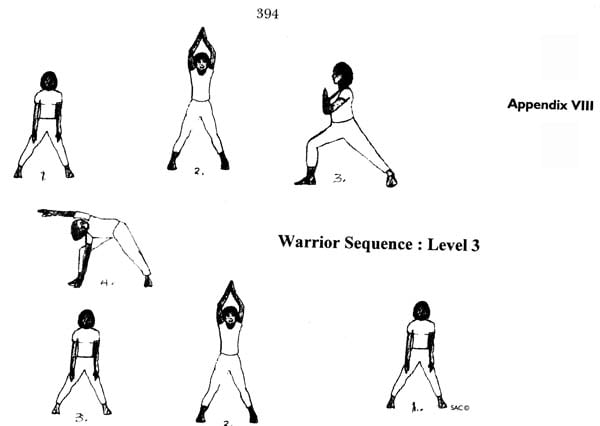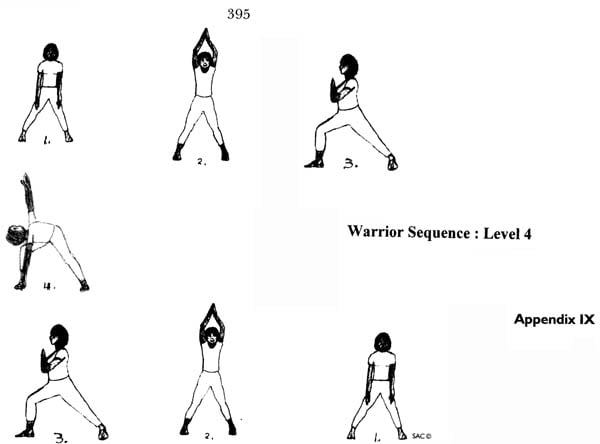
Yoga Education for Children (Volume Two )
Book Specification
| Item Code: | IDE259 |
| Author: | Swami Niranjanananda |
| Publisher: | Yoga Publications Trust |
| Language: | English |
| Edition: | 2012 |
| ISBN: | 9788186336779 |
| Pages: | 310 (Figures: 185) |
| Cover: | Paperback |
| Other Details | 8.5" X 5.5" |
| Weight | 510 gm |
Book Description
Yoga Education for Children, Volume Two is designed to stimulate those who work or interact with children to be creative in their use of yoga practices, empowering children to become creative, emotionally stable citizens of the future. The first two sections look at the real goal of education, which begins before a child is born, and yoga in special needs education. The third section presents two highly successful experiments in youth empowerment in India: Bal Yoga Mitra Mandal in Munger and the kanya and batuk project in Rikhiapeeth. The fourth section includes a detailed presentation of asana and pranayama techniques and their use in a wide variety of contexts with children of all ages: games, art sessions, yoga nidra and other meditations, to stimulate interest and imagination, facilitate easier learning and, most of all, introduce fun into the whole process of yoga for children.
Swami Niranjanananda was born in Madhya Pradesh in 1960 and was initiated into Dashnami sannyasa at the age of ten.
From 1971 he travelled overseas for 11 years. In 1983 he returned to India to guide the activities of Bihar School of Yoga, Sivananda Math and Yoga Research Foundation.
In 1990 he was initiated as a paramahamsa and in 1993 anointed preceptor in succession to Swami Satyananda. He established Bihar Yoga Bharati in 1994 and Yoga Publiations Trust in 2000. Author of over 20 books, he now guides and inspires aspirants through extensive national and international yoga programs.
I visited India and the ashram for the first time in 1999. Very soon after arriving, Swamiji Niranjanananda Saraswati suggested that it was time to think about the second volume of Yoga Education for Children. It has been some time since the first volume was published in 1985 in England, and in 1992 by Bihar School of Yoga in India. I am still actively involved with children and already had a few ideas I was using on the computer, so I started looking around for contributions to a new volume.
Since the first volume was published, the need for yoga education for children has been taken for granted. Not only in India today, but in many western countries, it is big business. Within India there are thousands of children and youths, not only doing yoga themselves, but teaching it to their peers, as well as giving health advice often to their teachers. So, the major purpose of the book is to stimulate those who work or interact with children to be creative in their use of yoga practices, to get across their subject matter and at the same time benefit the body, mind and emotions of the children, empowering them to become creative, emotionally stable citizens of the future.
The first volume was compiled and printed as a commemorative issue for Swami Niranjanananda, with inspiration from Swami Satyananada Saraswati. In the first volume, a lot of emphasis was on yoga for the pre-school child, including ideas for using yoga techniques in the school classroom to bring about an atmosphere conducive for learning easily. The first volume had three parts: Education, Therapy and Techniques, and has been used extensively in many countries. Ideas from it were used in the article ‘Om a little Teapot’, in the February 2001 issue of TIME magazine, although no credit was given. It has also been translated into Russian, Danish, Spanish, Portuguese, Pharsi and Hindi and will soon appear in French and Italian. It received a recommendation as the best book available for those wanting to teach yoga to children in a review of the newsletter for the International Association of Yoga Therapist.
The inspiration for this volume of Yoga Education for Children has been Swami Niranjanananda. Having lived the life of yoga since childhood, he is the perfect inspiration for adults and children. At the age of eleven he left India and came to Northern Ireland and then to England, before going on to Colombia, Australia and later in his teens, to the USA.
I had the fortune to meet him in the September of 1972. Swami Vasishtananda and I had moved to Newcastle upon Tyne, England, in June that year when Vasistha took up his post at the university. We had just found and purchased the house that was to become the yoga centre for the following twelve years, when we were told to go to Northern Ireland, pick up Swami Niranjanananda and bring him to live with us.
It was fall, school was beginning, Swamiji was twelve, so we took him to the nearest school and he was tested by the principal who placed him in the grade with his peers, 2L3, even though Swamiji had never attended school previously. After a week, Swamiji came home and told Swami Vasishtha that he was being taught second form math and he did not know first form math. Vasishtha told him to find out the name of the book used in first form and where one could purchase it. After two weeks, Swamiji had worked through the whole book on first form math with Swami Vasishtha. Every couple of weeks, Swamiji was given a test and moved up a class, so very soon he was appointed head boy.
During his stay with us, I would often be invited to give a talk about yoga. Swamiji would accompany me to these lectures. It did not matter if I spoke for thirty minutes or one hour, Swamiji sat in an asana beside me, completely still all throughout the talk. The women, especially mothers, were quite impressed with that. Someone so young, with so much self-composure, self-control and self-discipline; they had never seen anything like it. This does not mean he missed his ‘childhood’; he is still as playful as he was then.
Swamiji was also very creative at this time. It seems he got the hang of driving by backing our car, an Alfa Romero GT Jr sports car, in and out of the garage.
This second volume has four parts: Education, Special Needs Children, Youth Empowerment and Techniques. One aim of this second volume of Yoga Education for Children is to look at the real goal of education and Swami Niranjanananda had directed his remarks to parents and mothers in particular. For the yogi, education does not begin at age six or seven but begins while the child is still in the womb and within the home environment.
In this volume we also wanted to look at the role of yoga for special needs children, giving some references to work that is being done to introduce yoga into special needs education. Practical instructions for classes with these children are included.
Youth empowerment is taking place in both Munger, Bihar, and Rikhia, Jharkhand. The Bal Yoga Mitra Mandal (BYMM), the Childrens Yoga Fellowship, a brainchild of Swami Niranjanananda, is to my mind the future for teaching yoga to children: children teaching children. In this part of the new volume, we can see how this came about and look at some research done by BYMM on personality and memory in children, as well as a chapter for the yuva yogis (teenagers). The bal yoga activities began in 1996 and its rapid spread among the children and youth in Bihar is amazing. They are very special individuals aged seven to twenty-four years, some having been a part of the movement from the beginning. Whether they are seven or twenty-four years old, whatever they are given to do, they do with the greatest care and attention and are quite proud to have been asked to do the job. Imagine most children and teenagers in the West, if asked to rake leaves or stand guard at the gate. With most it is usually quite an ordeal just to get them to tidy their own rooms. These children and youth have been empowered not only to succeed but to help others to succeed.
In Rikhia there is also a lot of activity involving children and education. In this area of Jharkhand a large proportion of the population are tribals. This means that they are among the poorest people in many ways, materially and educationally. Most of these villagers are farmers. To date, approximately two thousand children from the villages of Rikhia attend the ashram daily. At the ashram their major aim is to learn English, Hindi and Sanskrit languages and they are taught many forms of yoga as well. Their abilities to learn and absorb the teaching has made them capable of carrying out duties at one of the major festivals in Jharkhand – Sat Chandi Mahayajna: leading the thousands of participants in kirtan, opening and closing the program, directing the flow of people in and out of the program, using both their acquired English and Hindi fluently. These children are receiving the education that was denied their parents and grandparents due to financial circumstances. They are being empowered to take their lives into their own hands and have dreams of a future filled with promise.
Although, in this second volume we introduced the notion of self-contained classes of various types, which can be used with all age children (e.g. many yoga games used by BYMM are described in this part, art and yoga or Yoga Magic Carpet Rides for geography), a strong emphasis in this book is for children aged five to twelve years. There is enough material included in this volume to keep teachers busy, not only using the text as provided, but being creative themselves so they can make the sessions fun, interesting, informative and promote fitness at the same time.
Here too, we have thoroughly considered the technique of yoga nidra and other forms of meditation practices to be used very effectively with children and youth. Pratyahara and dharana, relaxation and concentration, can be practiced in many ways. So, we have briefly introduced many different approaches to these techniques necessary to facilitate easier learning.
In this new volume there has been a lot of direct interaction between myself and other contributors. I have had a chance to meet many interesting people through our interactions and hope that we have come up with some ideas that the readers will find stimulating and useful.
| Editor's Note | v | |
| Introduction | 1 | |
| Analysis and Synopsis of the Book | 6 | |
| Education | ||
| 1 | The Purpose of Education | 21 |
| 2 | Vision of Yogic Education | 26 |
| 3 | A Gurukul System of Education | 30 |
| 4 | Establishing the Gurukul System of Education at Rikhiapeeth | 35 |
| 5 | Balanced Education | 40 |
| 6 | Yoga and Education | 44 |
| 7 | Enhancing the Ability to Study | 56 |
| 8 | Questions and Answers about Yoga for Children | 62 |
| Special Needs Education | ||
| 9 | Yoga in Special Needs Education: What's so Special about it? | 83 |
| 10 | A Class for Special Needs Children | 87 |
| 11 | Yoga Nidra for Deaf and Hearing Impaired Children | 93 |
| 12 | Getting in Touch, with Adya | 100 |
| Youth Empowerment | ||
| 0 | Bal Yoga Mitra Mandal, Munger: Yoga Education by Children | 113 |
| 0 | Why Yoga Education by Children | 119 |
| 14 | Yoga for Children by Children: An Empirical Study with the Bihar Yoga System | 121 |
| 0 | The Kanyas and Batuks of Rikhia | 134 |
| 0 | My Experience as a Rikhia Kanya | 141 |
| 16 | Yuva Yoga: Youth Empowerment | 144 |
| Techniques | ||
| 17 | Yoga Games | 155 |
| 18 | Row Your Boat: A Class Idea | 172 |
| 19 | Yoga Classes as Stories | 175 |
| 20 | The Art of Yoga | 183 |
| 21 | Yoga Magic Carpet Rides | 201 |
| 22 | Pratyahara and Dharana: Relaxation and Concentration | 228 |
| 23 | Yoga Nidra and Other Meditations for Children | 242 |
| 24 | Asana and Pranayama | 275 |
| Bibliography | 383 | |
| Appendices | 387 | |
| Index of Practices | 397 |
